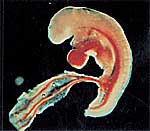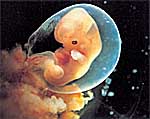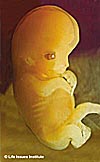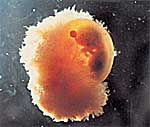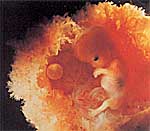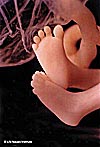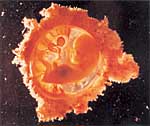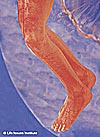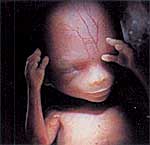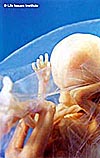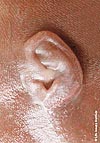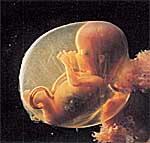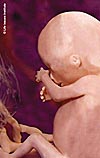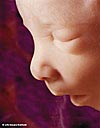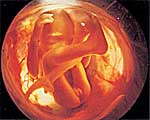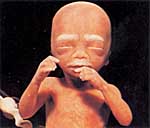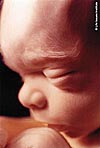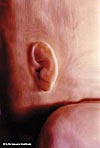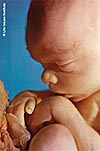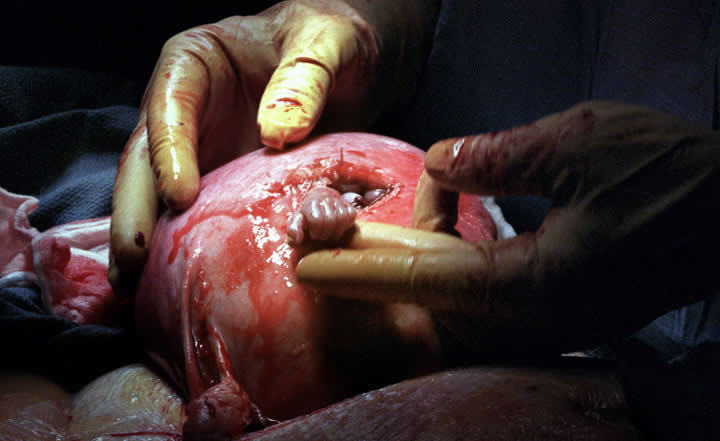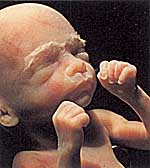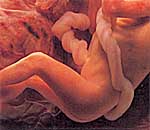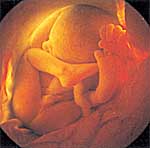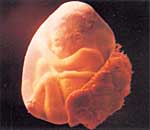The baby’s heartbeat begins early in the pregnancy. You can download the heartbeat by clicking here
Human Development
The age of an unborn child (gestational age) is measured in two different ways. Embryologists (doctors and scientists who study the early stages of pregnancy) measure the age of an unborn child from the estimated day of conception (the time when you actually become pregnant). On the other hand, practicing doctors measure an unborn child’s age from the first day of your last normal menstrual period, which usually occurs two weeks before conception. The development of the unborn child is described below from the day of conception also called fertilization. Stages of development and time periods are approximate and drawn from several sources.
Scientists and doctors sometimes use other terms to refer to the unborn child as it develops before birth. Therefore, in the early stages of development (up to 8 weeks generally) the unborn child may be referred to as an embryo, and in the later stages, the unborn child may be called a fetus.
For additional information on fetal development and abortion, please review this document published by the Pennsylvania Department of Health. Click Here to View Document
Day 1 Fertilization (24 hours)
Sperm joins with the egg, or ovum, to form one cell smaller than a grain of salt. Twenty-three chromosomes from each parent join to form every detail of human development: sex, hair, eye color, height, skin tone, personality, emotional make-up and other inherited characteristics. Everything is in place so that if development continues normally, a baby will be born in 38 weeks.
Days 2-7
The fertilized egg is rapidly dividing as it travels down the fallopian tube into the uterus where for the last two weeks, the lining has been preparing for it. It becomes a cluster of tiny human cells.
Days 8-13
The fertilized egg begins to implant in the lining of the uterus where it will draw nourishment, which enables the baby to grow. It takes until about day 14 to fully implant. The tiny human being has approximately 500 cells. Some cells split off to become the placenta which will provide nourishment for the unborn child.
Day 14
The unborn child at day 14 is 1/25 of an inch or the size of a period at the end of a sentence. The early beginnings of organ systems are forming as cells are dividing that will later become a brain, spinal cord, heart, kidneys and other organs.
Days 15-21
Placental chemicals and hormones will prevent the mother from menstruating. The unborn child is now about 1/17th of an inch. The heart and circulatory system are developing and will be the first organ system to function.
Days 21-23
The cluster of heart cells about the size of a poppy seed begins to beat.
Days 28-34
The backbone and muscles are forming. Buds that will become arms and legs are appearing. Eyes and ears are beginning to develop. The stomach, liver, gall bladder, pancreas, thyroid gland and lungs are beginning to form though not yet working.
The heart is pumping increasing quantities of blood through the circulatory system.



